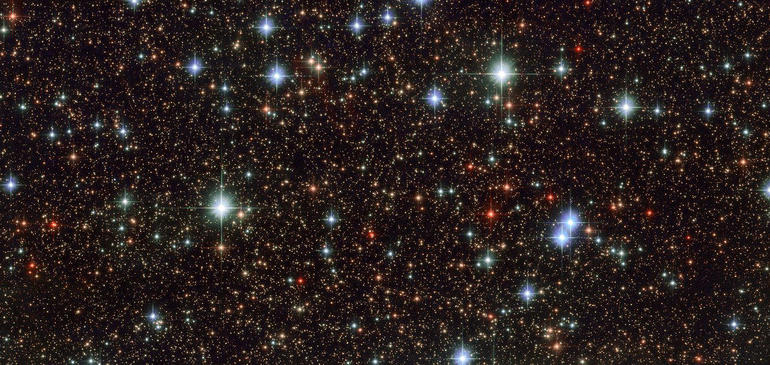After 27 years in space, the Hubble Space Telescope is sending back its most beautiful and revealing images
NASA celebrates
Hubble's birthday each year by giving us a gift - a new, breath-taking view of
our universe. The latest birthday card: this elegant swirl of galaxies dancing
in tandem deep in space. Last year - this bubble of stellar gases floating
among the stars, like a diaphanous, cosmic jellyfish. Hubble has shown us
radiant rose-shaped galaxies stretching across deep space; and dramatic
towering clouds of gas teeming with the stuff of creation. Stars are born here.
Year after year, in the infinite black canvas overhead, Hubble paints an
ever-expanding picture of our universe - an awe-inspiring light show for us to
admire ... and for scientists to study.
AMBER STRAUGHN: I
believe Hubble has been the single most transformative scientific instrument
that we've ever built.
"Most
transformative," says NASA astrophysicist Amber Straughn, because Hubble
keeps improving our understanding of the universe. She showed us what Hubble
discovered after staring for days into what seemed to be an empty black patch
-- a deep, dark void -- in outer space.
BILL WHITAKER: Is it
that Hubble just stares into that dark spot until the light penetrates and
reveals itself?
AMBER STRAUGHN: That's
exactly what happens. It's sometimes many, many, many days of just staring at
one part of the sky and allowing the photons to collect on your detector.
BILL WHITAKER: And
this is what's revealed.
AMBER STRAUGHN: And
this is what's revealed.
But Hubble was just
warming up. That was 22 years ago. Since then Hubble has stared deeper and
longer into space with enhanced equipment.
AMBER STRAUGHN: In
this particular image, there are 10,000 galaxies. So every single point of
light is an individual galaxy, its own little island universe. And so this is a
real visualization of the distances of these galaxies. So sort of like—
BILL WHITAKER: Sort of
3D.
AMBER STRAUGHN: --3D,
like we're flying though. So we can make these images 3D because we know how
far away the galaxies are. What Hubble has essentially given us is the size of
the universe. Hubble has taught us that the universe is filled with hundreds of
billions of other galaxies.
And now the latest
analysis of Hubble's data reveals there could be more than two trillion
galaxies—10 times more than previously thought. Typical galaxies, like our
Milky Way, have 100 billion stars. That means the total number of stars—or suns
out there—is 2, followed by 23 zeros. That's called 200 sextillion. To get some
sense of how many stars that is, we went to Adam Riess, who won a Nobel Prize
for his work on Hubble.
ADAM RIESS: This is
more stars in the visible universe than grains of sand on the beach.
BILL WHITAKER: --on
Earth.
ADAM RIESS: On all the
beaches on Earth.
BILL WHITAKER:
And Hubble has shown us this?

This image, created by
the Hubble telescope, shows a cluster of stars in the constellation Sagittarius NASA
ADAM RIESS: It has. In
many cases, it has allowed us to see what some of the most distant galaxies
look like and how many stars were in them. And we've been able to add it all
up.
BILL WHITAKER:
Hubble has been called a time machine -- that it looks back in time. What has
been the most astounding part of that for you?
ADAM RIESS: I study
explosions of stars called supernovae. It's like fireworks. It's only visible
for a short period of time, in this case, a few weeks. And that light has been
traveling to us for 10 billion years. It began its journey when the Earth
wasn't even here, And over those 10 billion years, our planet formed. Life
developed. We built the Hubble Space Telescope. We opened the aperture door.
And in the last one-billionth of one percent of that journey that the light
made, we opened the door just in time to catch it. Hubble almost didn't
catch anything. The first pictures it sent back were blurry because of a
microscopic flaw in the mirror. The Space Agency launched a daring mission to
fix it... read more (and see more photos):
https://www.cbsnews.com/news/spectacular-revelations-courtesy-of-hubble/?ftag=CNM-00-10aab5j&linkId=42989432